On Africa’s long-forsaken Idjwi island, Harvard School Of Public Health (HSPH) students are building a health care system from the ground up.
Lake Kivu sits between Rwanda and the Democratic Republic of Congo (DRC), its serene waves giving little hint of the conflicts that have erupted beyond its shoreline. To the west, Rwanda is still waking up from its genocidal nightmare. To the east, fighting continues in the DRC; though a 2002 treaty officially ended a civil war that left millions dead, militant groups persist with brutal rapes and other acts of terror.
Halfway between the two countries, surrounded by water, is the DRC-owned Idjwi, home to a forgotten population in the midst of its own kind of humanitarian crisis. And in a rare chance to explore the health needs of a remote and neglected population, HSPH students and other Harvard graduate students are documenting Idjwi’s state of public health and working with the island community to find solutions.
Though Idjwi’s people live in relative peace and stability, they are desperately poor and vulnerable to malnutrition and disease. The island’s six doctors work at ill-equipped health facilities inaccessible to many of the estimated 200,000, mostly rural, Bany’Idjwi. Nearly 3,000 people die each year from preventable causes, but the island has received little attention from the international community.
Seven students from across the University, including HSPH master’s candidates Michael Hadley, Tom McHale, and Dana Thomson, and Shu-Chuan-Tseng, MPH’10, traveled to Idjwi this summer to assess the island’s health needs. Their work paved the way for possible short-term interventions, such as vaccinations and a future health facility. This “dream team” of specialists, seasoned in fieldwork, included a physician, political scientist, geographer, anthropologist, and two architects.
A Public Health Model
The group came by arrangement of Jacques Sebisaho, a Congolese doctor whose parents were born on Idjwi. Now based in New York, Sebisaho recruited the students through Harvard’s Student Alliance for Global Health to partner with his organization, Amani Global Works. The hope is that this effort will encourage non-governmental organizations and donors to get involved and provide lessons that can be used to help other at-risk populations in Sub-Saharan Africa.
Over the summer, the students visited local health centers to document resources and patient experiences, conduct focus groups, and launch a household survey that will provide a snapshot of the population’s health needs against which the effects of future interventions can be measured.
Because there has not been a recent census on the island, the students had to get creative as they planned which households to sample. Thomson, who specializes in geography and geographic information systems, used satellite imagery to map infrastructure across the island and come up with randomized areas for the survey team to visit. Hadley organized the translation of the survey into the local language, and trained a cadre of young women to administer it.
At the end of each day, the HSPH students and their colleagues met to share their findings and figure out on the fly how to work together. One thing that surprised Thomson is that the island “isn’t really as peaceful as we’d like to think.” Although the population hasn’t suffered the systematic attacks seen in the eastern DRC, it has experienced occasional direct violence and indirect effects of the nearby turmoil. Rape and wife beating may also be more prevalent than anyone had suspected. McHale, a public health anthropologist, interviewed not only women who have suffered abuse, but also former child soldiers who now work as “moto” (auto rickshaw) drivers. Currently in their 20s and 30s, these men support each other much like a surrogate family, with its own organic mental health system.
“We want to understand how they’ve learned to process their traumatic experiences,” Thomson says. “Maybe there are techniques that can be used by other populations.”
Learning in the Field
Thomson found it rewarding to learn how architects, and others with whom she doesn’t typically work, make their decisions. But it was also a challenge that required negotiations in the field. “Everyone thought it was important to visit the health centers and interview doctors, but we all needed to ask our questions in different ways. The architects needed to observe what windows were open or closed, and how patients were using the space during a normal day. As a more quantitative person, I wanted to create summary statistics, such as what percent of clinics have running water. It’s been an incredible learning process.”
“The makeup of this team of students is a fascinating model,” says Sasha Chriss, a project manager at the Harvard Humanitarian Initiative and adviser to the group. “It’s how things should be done in the field, but rarely are. Typically in these settings, you send in doctors, and they build a hospital assuming that just creating a building ensures health care for a population. These students have a broader understanding of the dynamics of the island, and have great respect for the systems already in place.” This fall the students will meet to discuss short-term goals and interventions.
The effort is likely to yield results that can be applied to future humanitarian efforts with other populations in the region, says Allan Hill, Andelot Professor of Demography in the Department of Global Health and Population, who advised the students. “It’s the massive problem of public health: a population that has tremendous health needs and very little resources. What do you do? These students are jumping in with both feet and actually doing it.”
by Amy Roeder of the Harvard School Of Public Health – download the article in pdf
